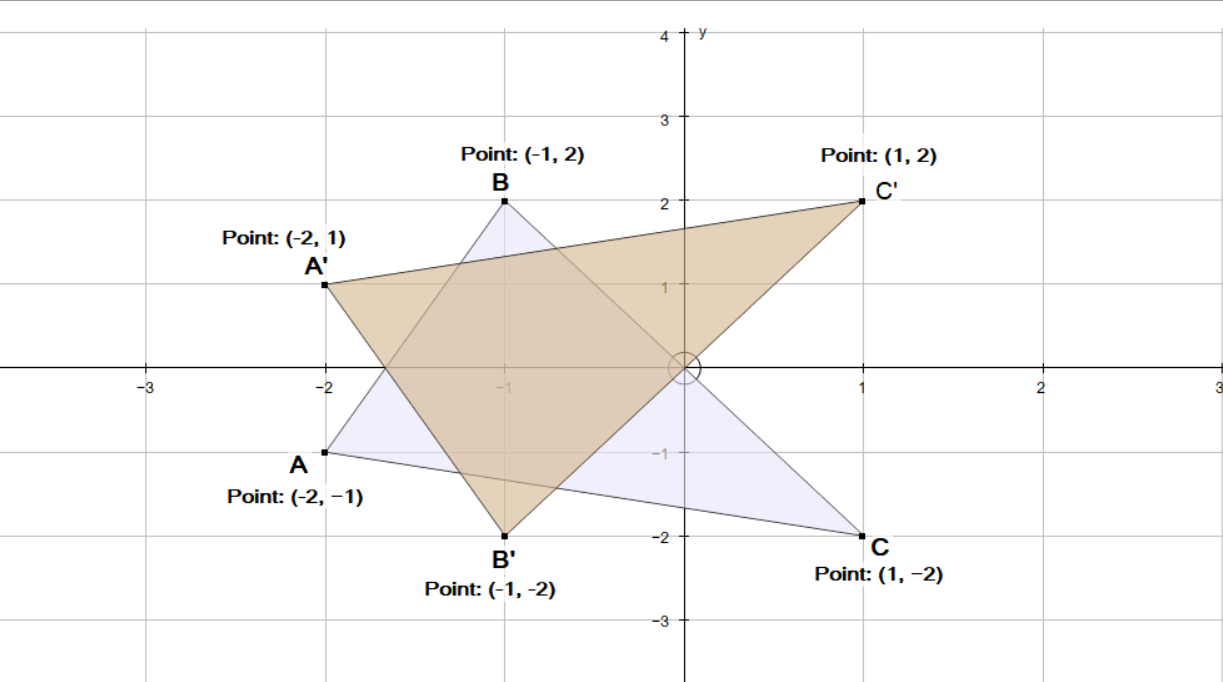
We can find the coordinates of the reflected triangle by using a transformation matrix.
First construct a matrix of the coordinates of the original triangle. We will call this #A#:
#A= [(-2,-1,color(white)(88)1),(-1,color(white)(88)2,-2)]#
Using as our basis the Identity matrix:
#I=[(1,0),(0,1)]#
When we multiply #A# by the identity matrix the elements of #x# and #y# in #A# are unchanged. If we take the identity matrix and make the element in the 2nd row 2nd column -1, then when we multiply matrix #A# by this, all the #y# elements in #A# change sign. This is exactly what happens when we reflect in the x axis, only the sign of the #y# coordinate changes and the #x# coordinate is left unchanged.
let #T# be our transformation matrix:
#T = [(1,0),(0,-1)]#
So:
#TA=[(1,color(white)(8)0),(0,-1)][(-2,-1,color(white)(88)1),(-1,color(white)(88)2,-2)]=[(-2,-1,color(white)()1),(color(white)(88)1,-2,2)]#
Coordinates are:
#A'=( -2 , 1),B'=(-1,-2),C'=(1,2)#


